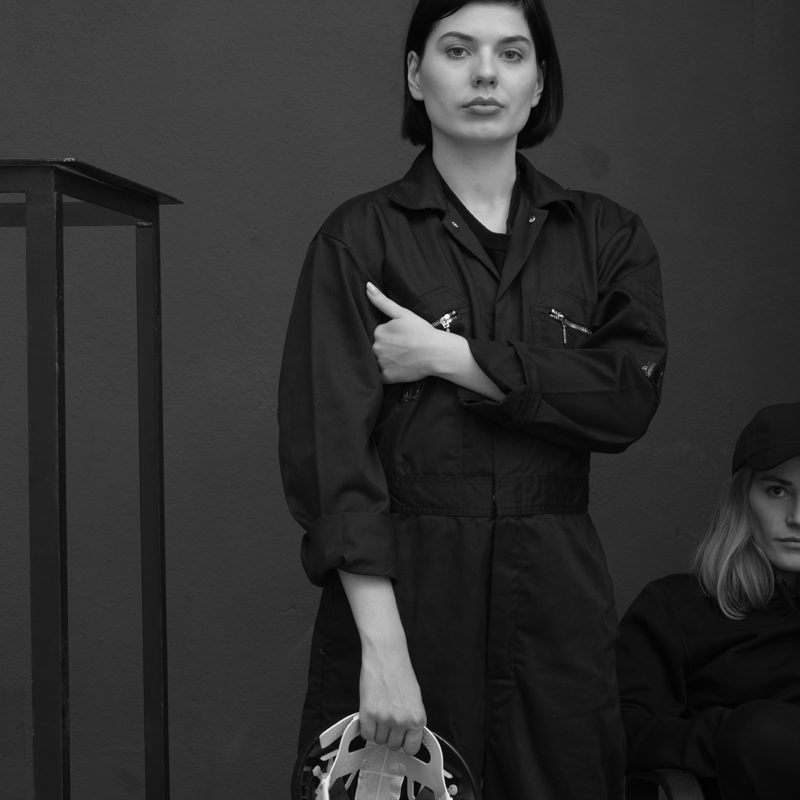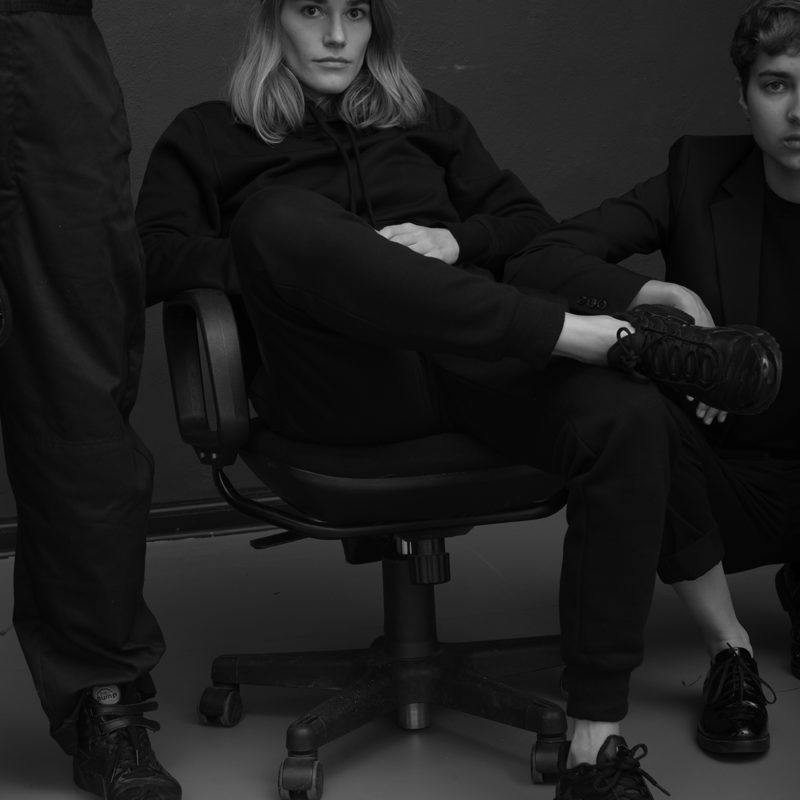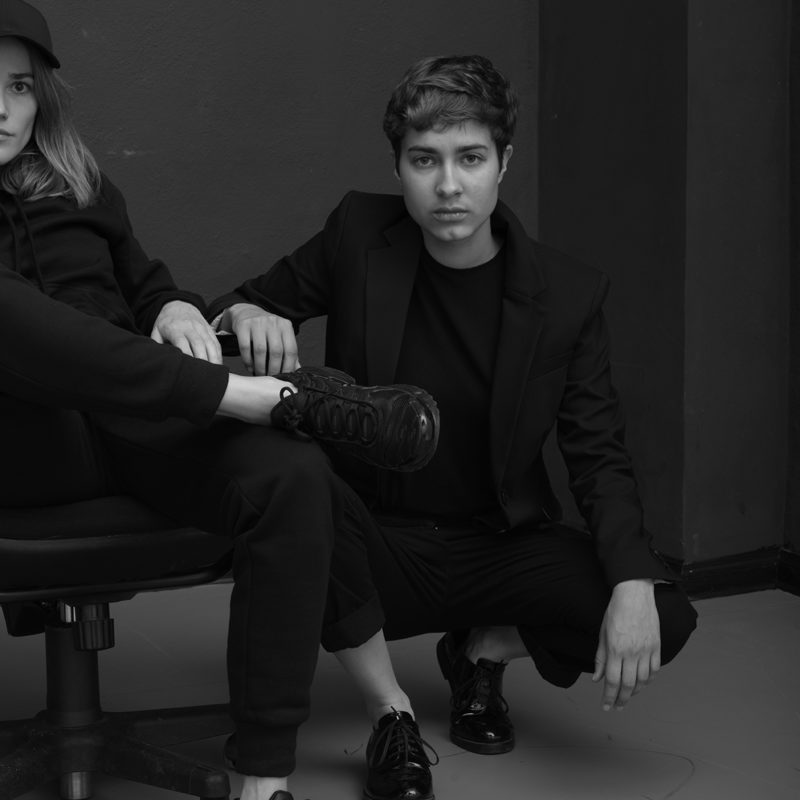Andrzej Steinbach, Gesellschaft beginnt mit drei
Any attempt at describing the situation unfolding in the Gesellschaft beginnt mit drei [Society Starts at Three] series is ultimately doomed to failure. Just when it seems that we’ve managed to grasp the entirety of the scene and to chart the trajectories of the three characters portrayed individually, something alters and the situation reconfigures itself. The suited blonde in the chair is suddenly standing up, wearing workers’ overalls, while her seat has been taken by a brunette in sweats and sneakers. At first glance, it is difficult to determine what the eye should be drawn to. Is this some sort of fashion shoot, or three separate, adjacent portraits? Andrzej Steinbach’s work deliberately accentuates the ambiguous; the photographer is primarily interested in scenarios that elude summarisation. The title of the series is by no means coincidental: it is a direct reference to the German sociologist Ulrich Bröckling’s seminal sociological treatise on trios in social relationships. The series can thus be considered an enactment of trying on different roles, different identities.
In Bröckling’s Gesellschaft beginnt mit drei, the sociologist investigated a shift in thinking about modern communities. Before World War II, countries sought to establish clear lines of division: us versus them, familiar versus alien. Today, the Other—one who does not fit the “profile” of a citizen in a homogenous society—becomes a guarantee of diversity. Following upon Georg Simmel, Bröckling asserted that the full breadth of interpersonal interactions is indeed possible in groups larger than two. Andrzej Steinbach’s series, with its focus on three individuals cycling through different configurations from one image to the next, is a perfect illustration of the results of Bröckling’s study.
Similar (literal) disorientations characterise one of the artist’s early works, the film be photographed (2012–2015). In lieu of a classical portrait of his subjects, Steinbach presented his audience with a few seconds of footage which appeared to have been recorded by an unskilled hand. Each shot, though framed like a portrait, is shaky, setting the subjects in motion rather than stilling them. The three characters, as with the protagonists of Gesellschaft beginnt mit drei, are unnamed. Although we see them, the image alone is not enough to narrate a story. Using forms typical for portrait photography, Steinbach strives to subvert the genre’s core assumption: the possibility of representation. His pictures and films explore the potential for manifold readings of unsettled situations.
The photographer has used similar devices and motifs in his work for years. The series Figur I, Figur II (2015) and Der Apparat (2019) similarly focus on undefined gestures and non-gendered outfits. The author portrays androgynous figures wearing unisex items of clothing: work overalls, roomy hoodies, bomber jackets. In his other pictures, more “neutral” pieces of clothing, such as a sweater, hat, or scarf, are worn like a niqab or a ski mask. Drawing associations with fashion shoots, this focus on clothing as a status symbol and measure of social standing is characteristic of Steinbach’s work.
Andrzej Steinbach (b. 1983 in Czarnków) is a graduate of the Hochschule für Grafik und Buchkunst (Academy of Fine Arts) in Leipzig. His works are included in the collections of the Museum of Modern Art in New York, the Sprengel Museum in Hanover, Museum Folkwang in Essen, and Fotomuseum Winterthur. He has been featured in solo exhibitions (Brussels, Hamburg, Hanover, Winterthur) and group shows (New York, Vienna, Geneva, Hamburg). He lives and works in Berlin.
Place:
ZPAF Gallery
ul. św. Tomasza 24
EXHIBITION OPEN:
24.05–23.06.2019
Tue–Fri 15.00–19.00
Sat–Sun 11.00–19.00
Tickets:
Free admission






